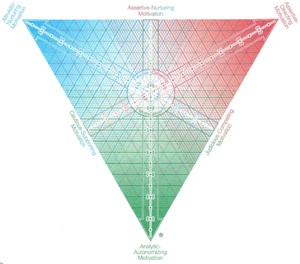

Food for thought: Improve your relationships and productivity through empathy and understanding – Strength Deployment Inventory
Have you ever wondered why you work seamlessly with one colleague but can't connect with another? Or why when the going is good your boss behaves in one way, but when times are tough his or her management style changes completely?
The complexities of our relationships with other people have always been (and continue to be) the subject of much analysis. Strength Deployment Inventory (SDI) is a tool that helps consultant and client teams better understand each other's motivations and behaviours so they can be more collectively and individually successful. Read on to find out more
What is Strength Deployment Inventory (SDI)?
Invented in the 1960s by Elias Porter, an influential psychologist and disciple of Carl Rogers, SDI is a personality questionnaire that helps us understand the prime individual motivations behind our resulting behaviours.
In consulting, we spend much time communicating and presenting to clients and attempting to teach and influence, however we tend to make two common mistakes in this area:
- We often focus most of our energies on the content and not enough on the way we present the information
- We deliver the message in the way that WE would like to see it. But is our target similar to us?
Spending some time analysing the characteristics of the people we are trying to influence, and tailoring the message to their preferences, increases our chances of selling and more successful consultant/client relationship.
What are our prime motivators?
SDI suggests we each have a preferred value system, which is essentially a collection of priorities that influence the way we approach others in all life situations. When we act according to our value system, we feel good about ourselves. On completing the questionnaire, each individual is positioned on the "SDI triangle" to show which value system they subscribe to. It measures our prime motivations from two standpoints, what matters when things are going well and then, what motivates you when you find yourself in conflict. See picture of the SDI triangle below:
The SDI motivational value system is described as:
Blue: If you are "blue" - you subscribe to a people-focused value system concerned with the protection and welfare of others. Blues are warm and friendly and are motivated by helping others above everything else. Key words: help, team, morale, win-win, communication.
Red: If you are "red" - you subscribe to an assertive, goal focused value system motivated by task accomplishment. Reds take decisive action and are constantly on the lookout for opportunity. Key words: actions, profit, bottom-line, business, competitors, shareholders.
Green: If you are "green" - you subscribe to a cautious analytical value system that prefers to think carefully before acting. Greens are motivated by autonomy and self-sufficiency. They are predominantly concerned with facts, detail, objectivity, fairness and weighing up pros and cons. Key words: balanced view, pros and cons, facts, expertise, logic, fair, principles, order, process.
Hub: If you are "black" - you subscribe to a flexible and adaptable value system that values the welfare and membership of the group. This group is capable of seeing all sides of an argument and changing their behaviour to adapt to what the group needs. Key words: flexibility, consensus, open mind, all angles.
Why we behave like we do?
People are complex and may find themselves a blend of different elements (colours). But rather like a buoy that is attached to an anchor, although varying situations/climates may make us sway towards a different behaviour at one time or another, ultimately we are anchored by our prime motivations and will remain true to them.
Our value systems are a bit like a pair of tinted glasses that we wear permanently; they colour everything we do. This is really helpful to understand and important to accept! Ultimately, we all see the same thing differently, and our motivations offer a clue as to how we see them that way and why. Once we understand more, we can choose to interact with our clients and colleagues in a new way that appeals to their value system. Rather than getting frustrated with behaviour that would normally leave one annoyed or disheartened, this new realisation of people's motivations means we can tailor our communications and behaviour to them, to get the best out of them. We can re-phrase our questions, communicate using a fresh format or tone, or ask for help in another area, in a way that we know will 'float their boat'.
In group exercises, I often ask colleagues with different value systems to start testing these "new ways of communicating" straight away, so they can experiment with new approaches, and tweak and amend them with direct feedback there and then. It's an invaluable starting point to more productive ways of working.
Using SDI to become more productive
Running a workshop based on SDI is a useful exercise for any team and particularly good for people in sales, customer service, negotiating, communications and influencing roles. It is also brilliant for self-awareness as well as promoting better team relations.
Once people have experienced SDI, those clients or colleagues whose behaviour may previously have been puzzling, suddenly make sense! The benefits of increased productivity, delivery and harmony are enormous. Plus there is also real value in just taking the time to recognise that we arent all the same in this world. We can find ways of understanding one another, and working effectively together.
For more information on using SDI please email monica.hernanz@elevationlearning.co.uk
Monica Hernanz, Principal Consultant, Elevation Learning